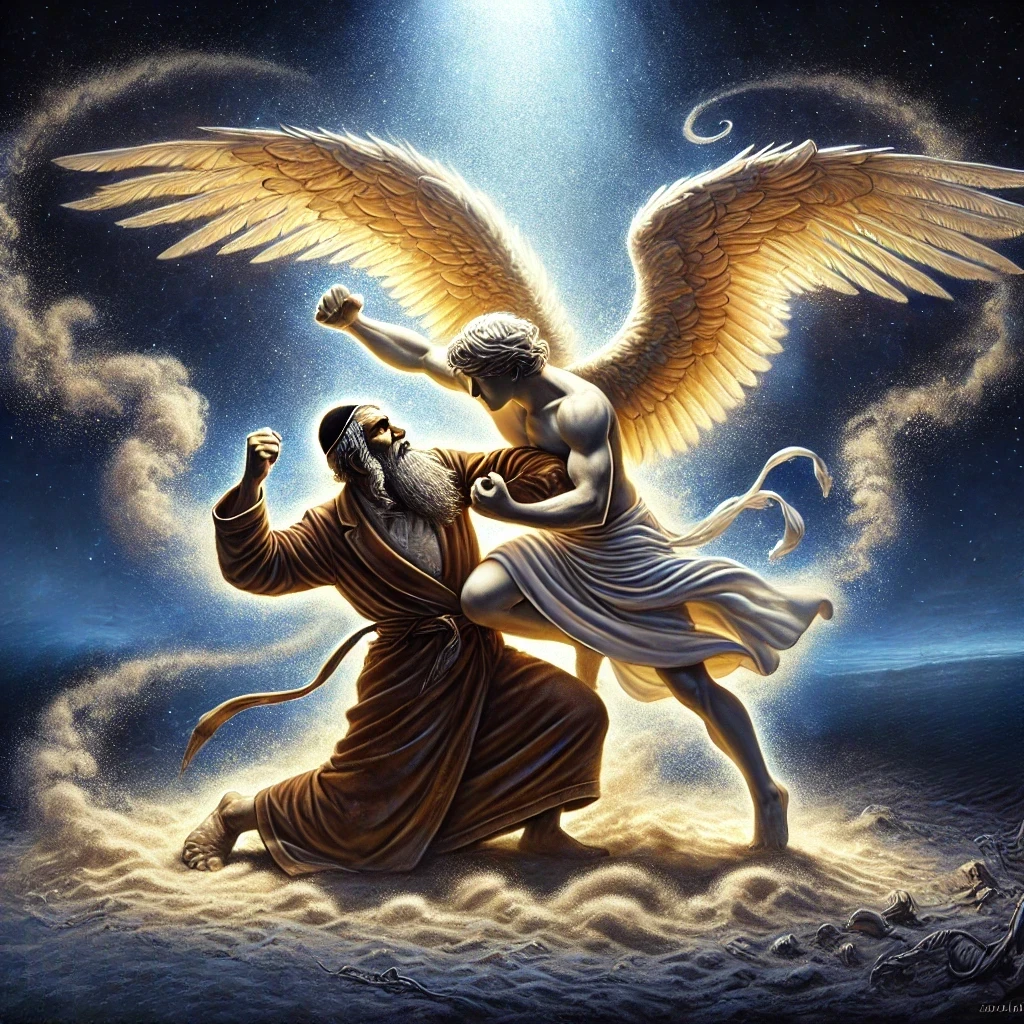BH
In Parshat Vayishlach, we encounter the dramatic episode of Yaakov Avinu wrestling with the angel of Esav. This confrontation occurs while Yaakov is preparing to meet Esav, who is advancing with 400 men. Amid his efforts to safeguard his family and possessions, Yaakov returns to retrieve small vessels (pachim k'tanim) and finds himself alone. At this moment, the angel of Esav confronts him, initiating a fierce battle that lasts until dawn.
The Torah describes the struggle as generating a significant amount of dust—avak. The Midrash elaborates that this dust ascended higher and higher, symbolizing the intensity of their wrestling. Reb Noson, in Likutey Halakhot, provides a profound interpretation of this imagery, connecting it to spiritual and emotional struggles.
The Symbolism of Dust: Avak as Depression
Reb Noson explains that the dust stirred during the struggle represents depression and lethargy. Just as dust settles on objects that remain stagnant and unmoving, so too does sadness immobilize a person, trapping them in inertia. Depression manifests as a lack of movement, where one feels lifeless and unmotivated, like a dusty, unused object.
In contrast, movement symbolizes joy and vitality. When a person is joyful, they are active, engaged, and full of life. They take initiative and embrace opportunities. The angel of Esav sought to overwhelm Yaakov with this avak—to cloud his spirit with sadness and inertia, especially during the dark hours of the night, which naturally evoke feelings of gloom and despair.
Yaakov’s Triumph: The Epitome of Simcha
The battle between Yaakov and the angel extended through the night, a time associated with darkness and vulnerability. However, as the Torah recounts, the angel ultimately failed: Vayar ki lo yachol lo—”And the angel saw that he could not overcome him.” Reb Noson emphasizes that Yaakov represents joy, as expressed in the verse: Yagel Yaakov, Yismach Yisrael—”Yaakov will delight, Yisrael will rejoice.” His innate resilience, grounded in simcha, enabled him to withstand the angel’s attempts to drag him into depression.
Joy Versus Depression: Yaakov’s Resilience
The angel of Esav attempted to envelop Yaakov in avak—dust—a symbolic representation of sadness, depression, and spiritual stagnation. Dust accumulates when there is no movement, much like how depression immobilizes a person. Yaakov, the epitome of joy, resisted. As the Torah says, Yagel Yaakov Yismach Yisrael—”Yaakov will delight, Yisrael will rejoice.” Yaakov’s dual names reflect his ability to maintain joy, even amidst challenges, balancing Gila (delight) and Simcha (rejoicing) depending on his circumstances.
Striking the Sciatic Nerve: A Target on the Lowly Souls
The angel, realizing he couldn’t overpower Yaakov directly, struck his sciatic nerve, injuring his leg. Reb Noson interprets this as a spiritual attack on Yaakov’s descendants who represent the “legs”—the spiritually distant or “low souls.” The gid hanashe symbolizes those vulnerable to being uprooted from their place of joy into sadness and despair.
However, the Parsha later reveals that Yaakov was healed, offering hope to even the lowest souls. By remaining connected to the true Tzaddikim, who continue Yaakov’s legacy, even those distant from holiness can reclaim joy and purpose.
Exile’s True Battle: Fighting Sadness
Reb Noson highlights that the essence of exile (Galut) is the attempt to drag the Jewish people into depression. The secret to survival and triumph lies in clinging to joy and connecting to the Tzaddikim of Yaakov’s caliber. The nations who attack the Jewish people often do so out of their own inner sadness and emptiness. True happiness would eliminate the need for conflict.
The Eternal Lesson
Yaakov’s wrestling match teaches us to combat sadness, remain “dust-free,” and find joy in every situation. By balancing Yagel Yaakov and Yismach Yisrael, we maintain our spiritual vitality, ensuring that darkness and despair cannot take hold.
May we all merit to embrace the joy of Yaakov and Yisrael, standing resilient in the face of challenges. Shabbat Shalom!
This article also appears on the breslov.org website: https://breslov.org/the-dust-of-sadness/
For a video presentation of this article: https://youtu.be/EtU637MUhTQ
Support Breslov Therapy: linktr.ee/breslovtherapy
This class is based on Likutey Moharan lesson 24. For more on this lesson: linktr.ee/breslovtherapy_lesson_24
https://breslovtherapy.blogspot.com/ Spotify: open.spotify.com/show/2cRAICkl6Hk9CdKUrAxSMJ Soundcloud: @breslov-therapy FB: www.facebook.com/breslovtherapytm.meir Contact us: @: breslovtherapy@gmail.com WhatsApp: +1-732-800-1863 #breslov #breslovtherapy #rebbenachman #rebnoson #likuteymoharan #likuteyhalakhot #likuteytefilot #meirelkabas #simcha
Shabbat Shalom
Meir Elkabas


No comments:
Post a Comment